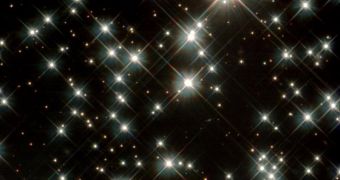Astronomers say that hypothesized cosmic objects called black dwarfs may indeed develop in space, but add that the Universe may still be too young, at nearly 14 billion years, to have led to the formation of the first ones.
Even if it did, there is currently no way for us to detect such structures, since they would emit no light or heat, and would be nearly impossible to detect using telescopes. Black dwarfs are believed to be the last stage in the evolution of stars that have insufficient mass to produce supernova events.
Death processes vary wildly among stars. For objects eight times the mass of the Sun or heavier, nova or supernova blasts are the preferred way to go. These explosions are so intense that they can briefly outshine entire galaxies in the night sky, and lead to the formation of neutron stars and black holes.
While the mechanisms involved in these blasts are relatively well understood, more complex issues arise when trying to understand what happens to Sun-like stars, or smaller, when they die. Most astronomers agree that these objects will turn into white dwarfs.
This class of dwarf stars is basically the remnant of larger stars that have reached the end of their burning cycle, or main sequence. As this happens, the outer layers of the stellar atmosphere are ejected into space, due to the fact that hydrogen nuclear fusion no longer occurs in the stellar cores.
The Sun will go out in pretty much the same way. When it releases its atmosphere (its red giant phase), the latter will engulf the inner solar system, including Mercury, Venus and Earth, and potentially even Mars. The atmospheric remnants will then puff out to create a beautiful nebula.
The core that is left behind is called a white dwarf, and it burns helium instead of hydrogen. For a star the size of the Sun, its white dwarf phase is expected to last for an additional 3 or 4 billion years after the end of its main sequence – which lasts around 10 billion years, Space reports.
The real question is what happens to white dwarfs once they exhaust their helium supply. Astronomers say that the next step is the formation of a black hole, an object that no longer emits heat or light. Like other cosmic objects with similar properties, black dwarfs will be nearly impossible to detect.
However, experts say, these structures will retain their mass, meaning that instruments capable of measuring the minute effects produced by their gravitational fields will still be able to detect them.
That is not likely to happen very soon, though. Experts say the Universe is simply too young to have allowed even the first black dwarf to form. When the Cosmos was less than a billion years old, all the stars were massive or supermassive, since vast amounts of hydrogen were available.
It was not until much later on that dwindling molecular gas clouds started spawning stars in the mass range required to theoretically form black dwarfs. Therefore, it is possible that the first white dwarf ever to burn out still has 1 to 4 billion years of life left in it.

 14 DAY TRIAL //
14 DAY TRIAL //